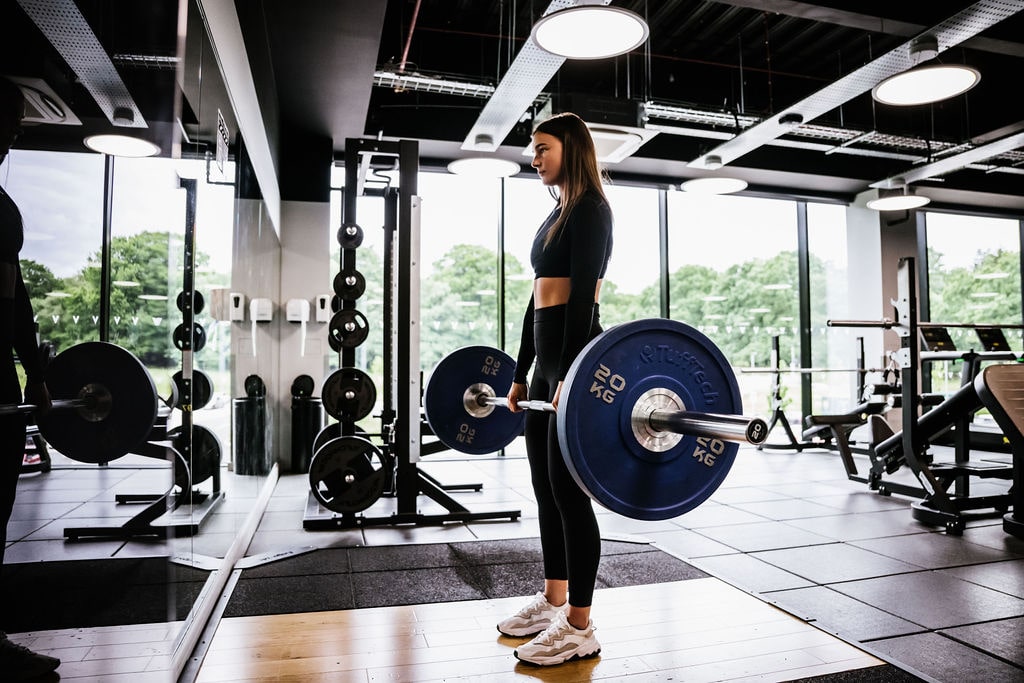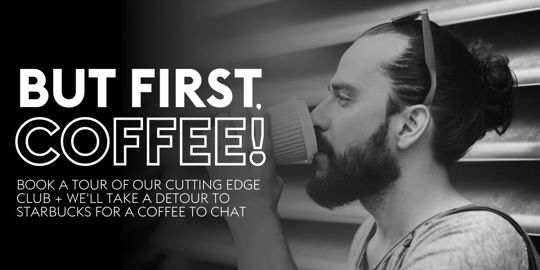Keeping consistent is the golden ticket for improving strength, but modern life does not always give us the amount of time we’d like to commit to our fitness regimes. That is why it is important to know what exercises to commit to during workouts, and make sure you arrive armed with a good plan of action.
Compound vs isolation exercises
Isolation exercises target one muscle group at a time- think the bicep curl. These are great for rehabilitation of specific muscles after an injury, or targeted work of a muscle that you feel needs strengthening. Compound exercises are the opposite… so you’ve probably guessed that they work more than one muscle group at a time. They can even combine more than one exercise into one movement to reach even more muscle groups!
We are going to focus on the benefits of compound exercises, the role they play in muscle gain and even give you some hints and tips to get the best out of these exercises.
So what is the fuss all about?
There are multiple benefits to using compound exercises as part of your fitness regime, for both helping you smash those fitness goals, and fitting in working out as part of a healthy balanced lifestyle.
- Limited time- If you are struggling to squeeze in as many workouts as you would like to, it can feel time consuming focusing on one muscle group at a time. When used correctly, compound exercise can provide a full body workout in a shorter period of time. Making the effort to correctly understand HOW to execute compound exercises will pay off in the long run.
- Feeling flexy- We focus on muscle building a lot, but in reality our joints play a huge role in executing the perfect lift. As compound exercises can be more intense and tend to be quite technical, it’s important to build strength in your wrists, ankles, hips etc. This is only going to benefit you further for isolation exercises as well!
- How much can you lift, bro?- More muscle engagement= heavier lifts. Assuming that your form is on point, compound exercises should allow you to lift heavier. Lifting heavier means more recruitment of muscle fibers, and overall better strength.
- Once you know, you know.- Compound lifts are not a simple feat. They take years of practice and have to be done right to make the most of the exercises and avoid injury. When mastered, they will improve your overall stability, which is a great advantage for inside and outside the gym.
The BIG Five
There are loads of variations of compound exercises, but there are five key lifts known as the ‘Big Five’. We are going to outline the muscle groups targeted for each exercise, and some tips for good form. Never lift weights until you are fully confident with how to execute it properly, we recommend starting with little to no weights. Our expert PT’s are always in club and would be happy to help you build the confidence in doing them correctly!
Deadlift
A deadlift is where a loaded barbell or bar is lifted off the ground to hip height, and lowered back down again. They engage the legs, core, shoulders and lower back.
Tips for the best form:
- Ensure feet are shoulder width apart, and angle your feet and knees slightly outwards. Make sure you are at your most stable stance.
- To help with hand positioning, brush your thumbs along the outside of your thighs as you reach down to the bar.
- Tight grip, the bar needs to be held as tightly as you can before you start to lift. If you feel like your hands can’t hold the load, drop the weight down to suit your grip strength.
- Hold your head in a neutral position, find a spot to focus on to help.
- Keep a strong spine by pushing your chest out throughout and continually engaging your core muscles.
- Keep the bar as close to your body as possible.
Squats
In simple terms, a squat is lowering your hips into a seated position and then returning to standing. Sounds simple huh? They work your legs (hamstrings and quads), glutes, lower back and core.
Tips for the best form:
- As with deadlifting, stand with your feet shoulder width apart, and feet turning slightly outwards to around 45 degrees.
- Let's talk bar positioning, you want to have the bar racked at shoulder height to ensure you don't struggle unracking and cause a compromised starting position.
- You then want to get underneath the bar placing it on your traps and gripping the bar with your hands wherever feels the most comfortable (the closer your hands are to your shoulders the more stability you will have).
- Keeping your head looking forwards, take a deep breath in and lower your body, hinging your hips and bending your knees until your quads are parallel to the floor.
- Core… you want to squeeze your stomach muscles throughout.
- Imagine you’re sitting on an invisible chair, this will help you to achieve the perfect form.
Bench Press
Also known as the chest press. This involves lying back on a bench and pressing a barbell or dumbbells upwards. This is an upper body workout, so targets your pecs, arms and shoulders!
Tips for the best form:
- Keep your elbows tucked into your sides, no chicken wing arm!
- Drive your chest up towards the bar, to avoid dropping the weight when it reaches your chest.
- Push your shoulder blades together, this will also help with raising your chest.
- Four points of contact at all times… feet firmly planted, shoulders and head against the bench and bottoms on the seat!
Pull ups
All you need here is an overhead bar. Whilst hanging from the bar with your hands just over shoulder width apart, pull up your bodyweight until your chin is higher than the bar. Another upper body workout that gets your arms, shoulder and back/ core.
Tips for good form:
- Double chins aren’t the most glamorous, but they are vital here. Squeeze your chin in!
Ensure your hands are shoulder width apart and grip HARD! - Tension in the back all the way through. Never just hang!
- Don’t try and pull up your whole body weight at the start if it’s too much. Try assisted pull ups to start with!
Shoulder Press
Also known as the overhead press, this is where a weight is pressed above your head whilst you are either seated or standing. This is a biggy for those shoulder gains, but does also work your pecs and arm muscles!
Tips for good form:
- If you are standing, ensure your knees are slightly bent and keep your knees parallel to the floor.
- Try not to let the dumbbells touch each other.
- Keep your core engaged throughout the movement for added stability.
- Make sure to maintain tension on the muscle you intend to train in this case the shoulders (predominantly the anterior deltoids).
- Keep reps controlled and avoid your arms becoming unstable and potentially dropping the weight or injuring yourself.
Hopefully we’ve given you some motivation to switch up your workout routine and really delve into the muscle groups you are targeting when you're in the gym. Making small changes can up your workout game from good to great. Our PT’s are always around for advice and guidance as well!
Are you looking to improve your strength training regime? Why not enroll on to our Muscle Gain Village Advance programme, or get some one to one training with one of our expert personal trainers?


